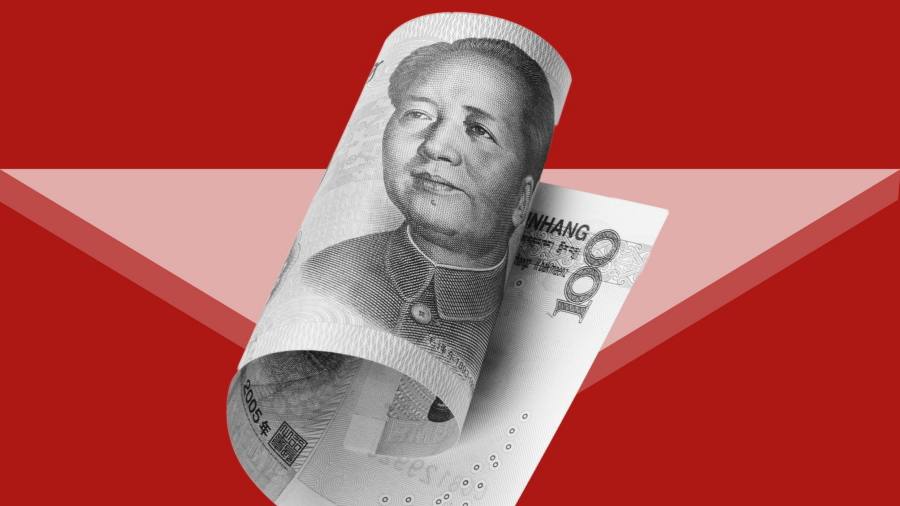Receive free Renminbi updates
We’ll send you a myFT Daily Digest email rounding up the latest Renminbi news every morning.
China’s renminbi has fallen to a seven-month low against the dollar as market concerns over slowing domestic growth and shrinking exports have compounded pressure on the currency from rising US interest rates.
The Chinese currency has been under pressure since the US Federal Reserve began raising rates last year, pushing yields on US Treasuries above those of their Chinese counterparts and prompting global investors to dump holdings of renminbi-denominated debt.
But the renminbi has continued losing ground this month, even after the US central bank opted to skip an interest rate increase in June.
The weakening exchange rate stands to help China’s export-dependent economy, making the country’s goods cheaper to buy for major trading partners.
But it also poses challenges for other Chinese corporates that do business internationally, including highly leveraged property developers with offshore debt that must be repaid in dollars.
On Monday, the currency fell as much as 0.6 per cent to Rmb7.2197 against the greenback, as markets in China reopened following a national holiday — during which official data showed tourist spending had failed to match pre-pandemic levels.
The drop brought the renminbi roughly 5 per cent lower against the dollar since the end of March. That has put the currency on track for one of the worst quarterly falls on record since the country ended a soft peg to the US dollar in 2005, as well as the sharpest such drop since widespread Covid-19 lockdowns last year brought swaths of the Chinese economy to a near-total halt.
Analysts said the persistent weakness in China’s currency reflected intensifying concerns about the fundamentals underpinning the country’s economic growth.
“The Fed paused in June but the renminbi is still weakening — that’s very much a shift from the interest rate story,” said Mansoor Mohi-uddin, chief economist at Bank of Singapore.
Mohi-uddin said concerns over Chinese growth had been weighing on the currency since early in the second quarter, but pressure from the Fed had been replaced by concerns over exports, which registered a surprise year-on-year fall of 7.5 per cent last month.
“Worries about the economic recovery internally and the external environment — those two factors are what’s driving the currency weaker,” he added.
The latest leg lower for the renminbi also came despite signs that the country’s central bank was taking minor steps to slow the pace of depreciation. On Monday, the People’s Bank of China set the midpoint, around which the currency can move 2 per cent in either direction, stronger than traders expected.
But analysts said there were no signs of substantial capital flight or market panic that would prompt the PBoC to intervene meaningfully in foreign exchange markets to try to halt the sell-off.
“Policymakers have so far only warned against speculation, but haven’t acted to intervene because the market is operating smoothly on the whole,” said Guan Tao, global chief economist at Bank of China International and a former official at the State Administration of Foreign Exchange.
He added that while a weaker currency could help improve exports by making outbound shipments cheaper, it was “not the ultimate goal” of policymakers. “It doesn’t mean the renminbi will depreciate forever.”
Read the full article here




